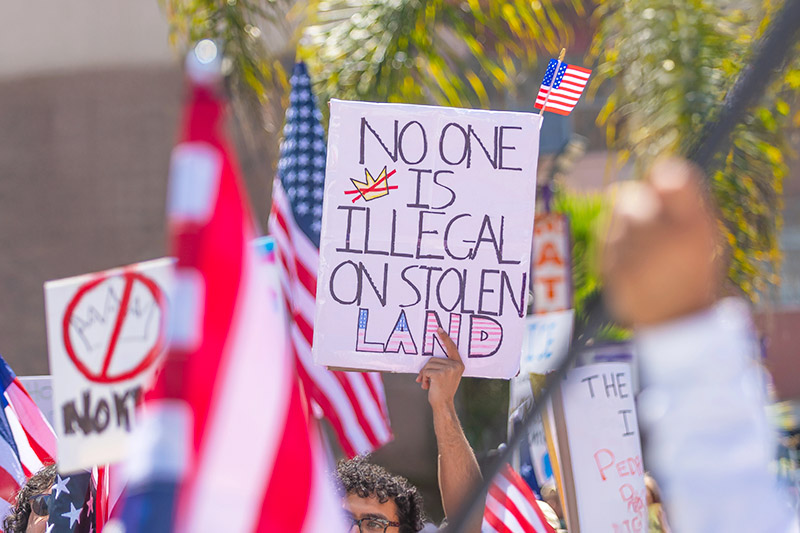When federal immigration raids increase in a major city like Chicago, the effects reach far beyond immigration itself. The housing market, rental prices, and even new construction can all be influenced by how communities react to fear and instability. While some people might not notice these changes right away, the impact can slowly reshape neighborhoods and the city’s housing trends over time.
Families Losing Income and Facing Eviction
One of the first ways ICE raids can affect the housing market is through loss of income. Many immigrant families rely on one or two people who work full-time jobs to pay rent. When those workers are detained or deported, their families can’t afford to stay in their homes.
This can lead to more late rent payments, evictions, or people moving in with relatives to save money. Landlords, seeing higher risks, may begin tightening their rental standards, asking for more proof of income, higher deposits, or avoiding tenants they view as unstable. Over time, this can push out families who were already on the edge financially.
Vacancy rates could rise in certain neighborhoods where immigrant renters make up a large portion of residents. Property owners might lower rent prices to fill those units, while others may sell their buildings to investors looking for quick profit. Either way, the local rental market becomes less steady.
Fear and Uncertainty Changing Where People Live
Even people who aren’t directly affected by ICE raids feel the tension. In communities with high immigrant populations, there’s often fear of being seen, questioned, or targeted. Some families may stop applying for apartments, avoid public housing programs, or stay in overcrowded units just to stay off official records.
This creates less movement in the rental market. Fewer people are looking for new places, which can hurt landlords in those areas. At the same time, more stable parts of the city where people feel safer—might see a small increase in demand. This could cause rent prices to rise in those neighborhoods while dropping in others.
Real estate agents may also notice that buyers become more cautious. Investors might hesitate to buy multi-unit buildings in neighborhoods that are under heavy ICE activity because they don’t want to deal with unpredictable turnover or rent collection issues.
Labor Shortages Slowing Down Construction and Repairs
Another area that gets affected is construction. A large part of the construction and renovation workforce in Chicago consists of immigrant labor. When raids or deportations remove those workers from job sites, construction slows down.
Developers may face delays in building new apartments, homes, or commercial spaces. The cost of hiring replacement workers, especially if they are less experienced, can also raise overall construction costs. Fewer completed projects mean a tighter housing supply, which can eventually push rent prices higher even if demand in some areas falls.
The same goes for maintenance work. Property owners may find it harder to find affordable workers for repairs and upkeep, which can lower the overall quality of rental housing in certain parts of the city.
Neighborhoods Shifting and Property Values Changing
Chicago’s neighborhoods have always changed with time, but immigration enforcement could speed up that process. Areas that once had strong immigrant communities might start to lose residents, businesses, and cultural life. When families leave, small shops, restaurants, and services that depended on them may struggle or close.
Vacant apartments and empty storefronts make a neighborhood feel less safe and less appealing, which can reduce property values. In contrast, nearby areas that remain stable might attract new buyers or investors looking for “safer” real estate opportunities.
This kind of uneven change creates a patchwork effect: some parts of the city decline while others benefit. Long-term residents might feel like their neighborhoods are losing their character, while others see it as a chance for redevelopment or gentrification.
Long-Term Market and Policy Effects
Over time, repeated ICE raids can leave a lasting mark on how Chicago’s real estate market operates. Landlords and property managers may raise security deposits or require more documents from potential tenants. Mortgage lenders might become stricter with loans in areas they view as unstable.
At the same time, city leaders could step in with stronger tenant protection laws or local programs to help families facing eviction due to immigration issues. Nonprofit groups might offer rental assistance or legal aid to help families stay in their homes.
However, even with local support, fear and mistrust don’t fade quickly. Developers could start focusing on areas with fewer uncertainties, which might widen the gap between high-income and low-income parts of the city. Over time, this imbalance can lead to fewer affordable housing options for everyone, not just immigrants.
Conclusion
The ICE raids in Chicago are not only a legal and social issue, they’re also an economic one. The fear, financial stress, and community disruption that come from immigration enforcement ripple through the city’s housing system. Families lose homes, neighborhoods change, and construction slows down.
In the short term, rent prices might fall in some areas and rise in others. In the long run, the city could see deeper divisions between stable and unstable neighborhoods. Whether Chicago’s housing market recovers or becomes more divided will depend on how the city, landlords, and residents respond to these challenges in the months ahead.






